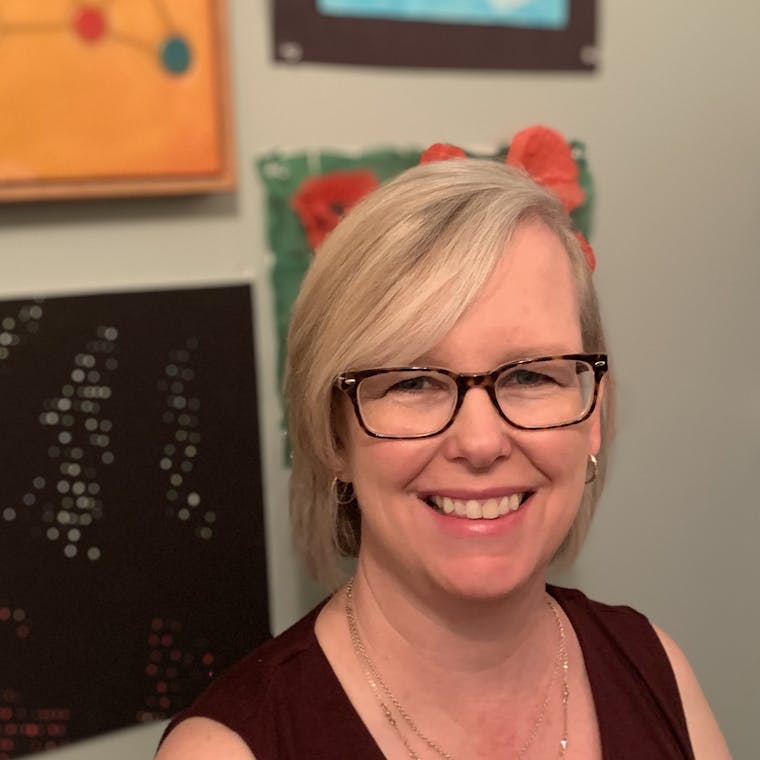Online Learning Doesn’t Have to Be “Less Than”
by Kristin Murner, MBA, MSEd, Director, Learning Design | April 8, 2020

One of the jackpot moments of my school career occurred in Mr. Cross’ 6th grade science class. I was paired with a bunch of my similarly nerdy friends to dissect an old VCR to see how it worked. Not only did we back out the screws on the housing and complete the required worksheet during our in-class time, my father let me invite them to the house and into his woodworking shop where we could really get into it. That night over pizza, we took apart every little wheel and structure in the player. There were still bits of magnetic filings stuck to my dad’s bench vise when we sold the house 10 years later.
That night of prying and peering and breaking apart satisfied my curiosity for the moment, but also made me thirsty for more. I entered college as a biomedical engineering major thanks to several more of these informal, but seminal moments. Though it may not seem like it now, the ultimate win of this remote learning season could be the opportunity to help your students identify what really sparks their interest and joy. While my VCR examination may have started as a simple classroom activity, it was the freedom to learn beyond the worksheet that made the difference in my lifelong learning.
By now, everyone’s dinner table features talk of online learning. We’re all getting on Zoom for everything from synchronous sessions of school to virtual game nights and religious services. The questions are already starting about how to make this new learning environment “as good as” or “equal to” the in person classroom we all had growing up. There are lots of articles on what can and cannot be accomplished online and how it differs. I am here to tell you, I think both have distinct advantages, but this is such a unique time and place in history that I don’t find debating to be time well spent. Rather, I think it’s a time to focus on the big picture and how we can help our students grow as learners, not just in what they learn. What if we focus on helping them feel connected as much as we consciously cover content? When constructed correctly, the online classroom can be a fantastic vehicle for doing just that.
Start with Time Management
Every teacher knows that educational time goes far beyond the clock and learning beyond the walls of the school. While time management is considered a “soft skill,” these are often the behaviors that help students succeed in higher education and in the job market. When learning is happening at home, it is the perfect opportunity to help students take more responsibility for their learning.
In the classroom, bells and teachers manage time for most activities. Even “unstructured time” has been pre-programmed to fit into a rigid and organized school schedule and often bleeds into the after-class time that is crammed full of extracurriculars, sports, and jobs. With all of that on hold, it is a great time to guide students in planning their learning projects, study time, and activity time.
Have them reflect on how their planning went, how closely they stuck to their time boxes, and the potential adjustments they will make going forward.
Students can ask themselves questions like:
- Did I budget enough time to practice a new skill?
- Did I achieve the goal I set?
- What did I learn about my time management skills from this experience?
- What would I do differently next time?
Students of all ages can benefit from the increased independence that learning at home affords when held accountable and encouraged.
Synchronous Sessions = Online Flipped Classroom
Learning independently with “guardrails” benefits everyone. In some ways, thinking of the online classroom as a flipped classroom may be an easier way to think about it— rather than as a “different” modality altogether. In a typical flipped classroom, students learn foundational material online in pre-recorded lectures and exercises, and save the in-person experience for the true synthesis, application, and discussion of learning. In this new modality where we all currently find ourselves, we can leverage all of the free instructional content on the Internet and add it to experiential learning that can take place at home.
An awesome way to grow with your students is to commit to learning one new thing every other week (or so) alongside them and have a synchronous session (or use a video sharing platform with comments) to share. Keep it creative and free; each of you can learn whatever you want. There are hundreds if not thousands of free synchronous and pre-recorded online sessions on drawing cartoons, writing stories, intricate Lego builds, learning to play instruments, learning to make instruments (poor carrots have been turned into recorders!) as well as developing sports skills like doing the perfect push-up or ball-handling skills, speaking new languages, and makeup and hair tutorials.
Truly, the sky's the limit with informal online learning, but there is no reason you can’t incorporate that into your online classroom and learn a lot about your students in the process. Just be sure to set clear, age-appropriate “guardrails” about peer-to-peer feedback to ensure each student feels supported and encouraged as they explore their passions.
Involve Your Students and Help Them Get Creative
The design of a project satisfies multiple levels of thinking. Application, synthesis, and the litmus check of say, doubling a cookie recipe, shows they can add fractions, follow instructions, and plan. Can they build a marble run using found objects (empty toilet paper tubes and painters tape on the wall anyone?) and use Flipgrid to record their iterations and show the Scientific Method at work? While not every kid will have access to a workshop full of tools, (nevermind the supervision required to use them) are there ways for them to demonstrate new learning in a practical way?
For older learners, encourage deep reflection and project planning with outcomes aligned to their career focus, personal passion projects or community service. Is there an opportunity to develop skills associated with their major, minor or specialization that would ordinarily get brushed to the side? When (especially) these learners find meaning in a project, it makes it easier to understand why it’s important to carve out time to work on it. A clear return on investment makes the time spent engaging feel valuable and it is more of a delight and escape than work.
The Online Classroom is Ideally Suited for Sharing and Feedback
Learning happens when students link new information to something familiar. We then know that learning has “stuck” when they can demonstrate a skill or solve a problem that requires that new content or behavior. What can you measure, and how?
Since your students are outside the traditional classroom, think about opportunities for assessment and reflection that can make good use of their environment in a safe and innovative way.
- Use polls (if provided for in your current online classroom) to gauge ongoing general understanding and confidence.
- With learning management systems (LMS) purpose-built for peer-to-peer feedback, posting videos, pictures, and learning artifacts is simple.
- Use reflection, demonstration, and feedback loops to enhance and enrich activities.
Take this opportunity to create a safe environment for students to share their projects and give and receive feedback from their classmates. Model what you want to feedback to incorporate and establish a supportive online community.
Surprise Your Students
The home environment not only presents opportunities for your students to be creative, but for you to be, as well. What do you have at home that will give your students a surprising glimpse into your life? (And no, I don’t just mean the surprise appearance of your kids during webinars- though that’s bound to happen, and we should all just roll with it!)
What hobbies do you have that you could leverage? Are there experiments you could do on camera in the kitchen (homeschool blogs and Pinterest are full of amazing science resources), or music you could share as part of your culture or things you have gathered while traveling? Are you comfortable teaching in costume or as a character? Consider special activities you can do for students’ birthdays, and ways to bring your traditional classroom process, inside jokes, and culture online. When former students tell you what they miss and/or remember best about your classroom, THAT is probably something you should try to replicate.
Life Isn’t “Business as Usual,” So Learning Can’t Be Either
But just because it isn’t the typical school year, doesn’t mean it has to be inferior. Leverage what you have for online tools. Don’t rush to add new things or complexity. The most important thing to your students right now is YOU. The encouragement of my teacher and the support of my friends helped set my identity as a curious science kid. Something I’ve yet to outgrow...well, maybe the “kid” part. You are the best person to take this journey with your students, and your students will ground you too. We will all learn together.
Download "Tips for Ensuring Online Learning Isn’t 'Less Than' In-Person" for steps you can take today to foster communication and community with your students.
For more educator resources to use in the digital classroom, read more articles on our blog.

Kristin has worked in traditional, distance/online, and for-profit education for over 20 years. She has taught undergraduate marketing on an Army base; chemistry, algebra and physics at a private K-12 school, and she has delivered and proctored more standardized tests than one should ever have to count. At Kaplan Test Prep, Kristin helps craft tools and policies that promote solid learning science across all of KTP’s business units. She holds a BS in health physics, an MBA in marketing, and an MSEd in instructional design and technology.
See more posts by Kristin Murner, MBA, MSEd, Director, Learning Design
